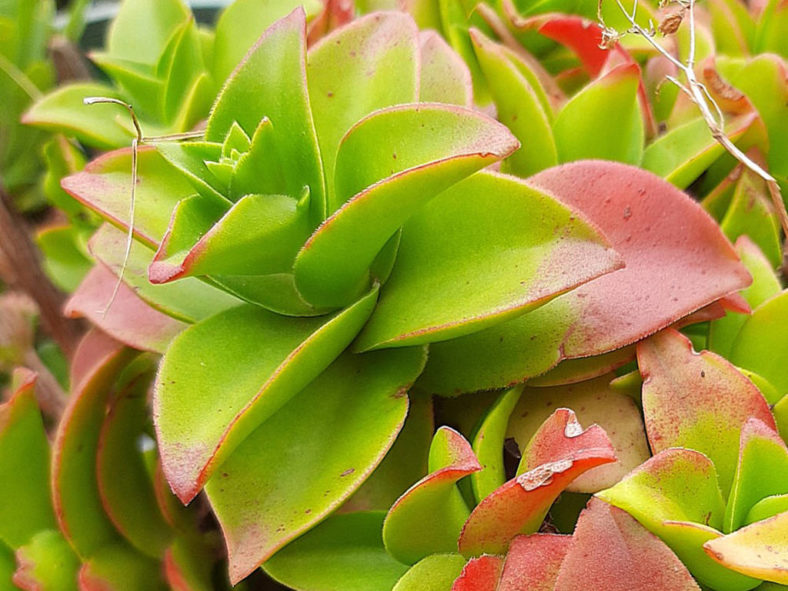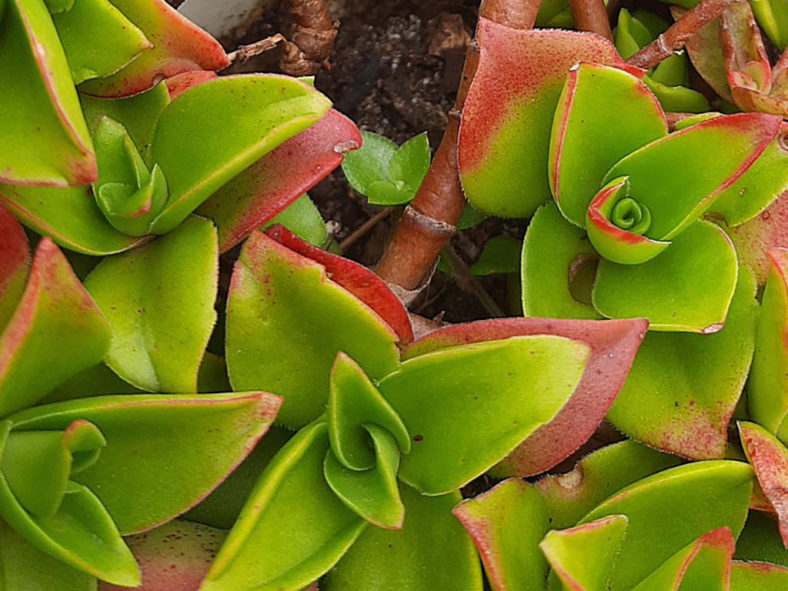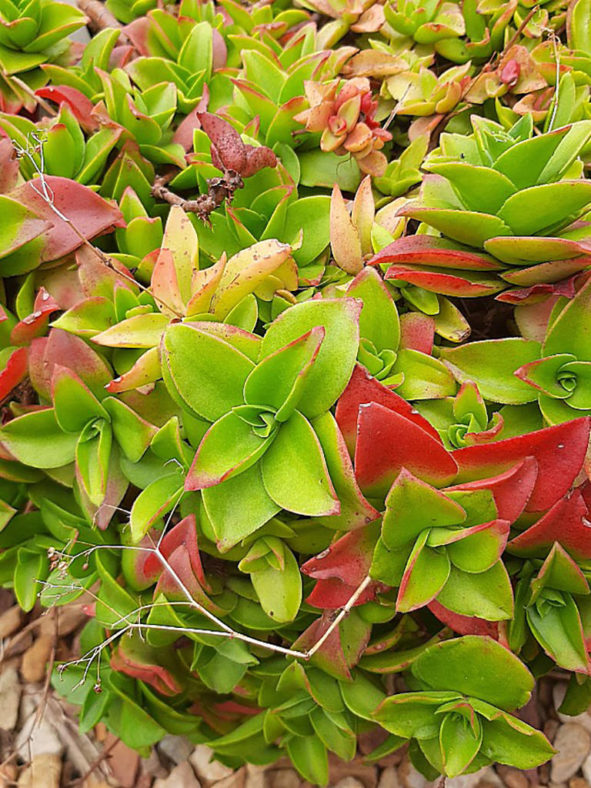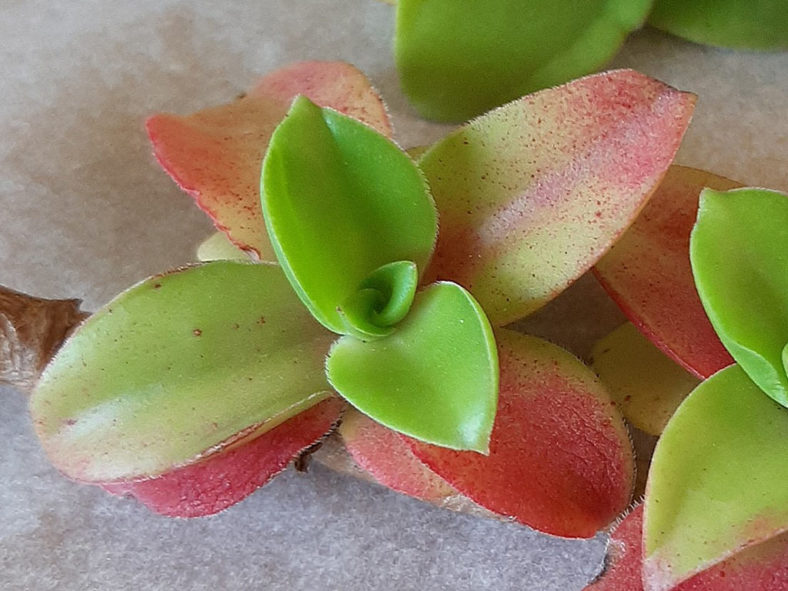Scientific Name
Crassula cymbiformis Toelken
Scientific Classification
Family: Crassulaceae
Subfamily: Crassuloideae
Genus: Crassula
Etymology
The specific epithet "cymbiformis (pronounced sim-BIH-for-miss)" means "boat-shaped" and refers to the shape of the leaves.
Origin
Crassula cymbiformis is native to South Africa. It grows on shallow soil on rocks and is known only from the type locality in the southern Waterberg near Rankin's Pass in the Limpopo province.
Description
Crassula cymbiformis is a moderately branched succulent shrublet with stout, decumbent branches and fleshy, distinctly boat-shaped, more or less four-ranked leaves. It can grow up to 8 inches (20 cm) tall. The leaves are green, often tinged red, and smooth with fine, irregular marginal cilia. They can measure up to 3.2 inches (8 cm) long and 1 inch (2.5 cm) wide.
The white, tubular flowers appear in a terminal, flat-topped to irregularly branched thyrse in fall.

How to Grow and Care for Crassula cymbiformis
Light: C. cymbiformis prefers full sun to partial shade. However, intense afternoon sun on the hottest summer days can burn the leaves of the plant. Therefore, a place with morning sun and afternoon shade would be perfect. Indoors, place your plant in a window that receives at least 6 hours of direct sunlight.
Soil: This plant is not particular about soil pH but requires very porous soil with excellent drainage. You can use commercial potting soil mixes designated for succulents or mix your own.
Temperature: Like most Crassulas, this succulent will tolerate short-term freezing, but extremes of cold or heat will cause it to lose leaves and die. C. cymbiformis can withstand temperatures as low as 25 °F (-3.9 °C). USDA Plant Hardiness Zones 9b to 11b, 25 to 50 °F (-3.9 to 10 °C).
Watering: Avoid overwatering by the "soak and dry" method, in which the soil is soaked with water, slowly drained, and left to dry out before watering again. Reduce watering in winter. Potted plants require more frequent watering than those in the ground.
Fertilizing: C. cymbiformis does not need much feeding but will benefit from a small amount of organic fertilizer when it starts actively growing in mid-spring.
Repotting: Repot as needed, preferably in spring, at the beginning of the period of active growth of the plant. Make sure the soil is dry before you begin repotting.
Propagation: This succulent is generally propagated by leaves or stem cuttings but can also be grown from seeds. The easiest way is to propagate C. cymbiformis from a single leaf, while using stem cuttings is the fastest way to get a decent-sized plant. These processes are most successful at the beginning of the growing season. Sow the seeds in the spring or summer.
Learn more at How to Grow and Care for Crassula.
Toxicity of Crassula cymbiformis
C. cymbiformis is nontoxic to people and pets.
Links
- Back to genus Crassula
- Succupedia: Browse succulents by Scientific Name, Common Name, Genus, Family, USDA Hardiness Zone, Origin, or cacti by Genus
Photo Gallery
Click on a photo to see a larger version.


